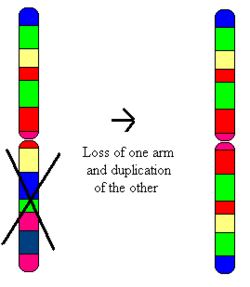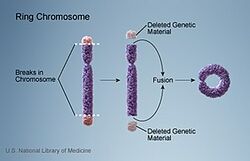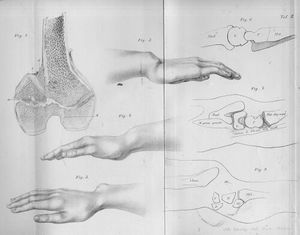Turner Syndrome
This article or area is currently under construction and may only be partially complete. Please come back soon to see the finished work!
Introduction[edit | edit source]
Turner syndrome is a congenital ovarian hypoplasia syndrome and genetic condition that happens only in females when one of the sex chromosomes is missed or changed partially or completely causing medical and developmental problems such as; short height, failure of the ovaries to develop, and heart defects. It was described for the first time by Henri Turner in 1938. Turner syndrome can be diagnosed before birth, or during infancy. However, the diagnosis can be delayed in girls with mild signs and symptoms until early adulthood[1].
Mechanism of Injury / Pathological Process[edit | edit source]
Partial or complete missing of the X chromosome
- When there is an error in the sperm of the father or mother’s egg and every cell of the baby will have one X chromosome this condition is called Monosomy, in which there is a complete absence of one X chromosome. It is found in about half of females with Turner syndrome.
- In Mosaicism if when the error happens during fetal development in cell divisions we will find some cells have only one chromosome and others will have two copies.
- X chromosome changes, in which the cell will have one complete and one altered copy, all cells will have one complete and one altered copy of the X chromosome when the error happens in the sperm or egg or happens in cell divisions early during fetal development
- Y chromosome material, some cells will have one copy of X chromosomes and one copy of the X chromosome, and some Y chromosome material in other cells. And this presentation is considered a risk factor to develop gonadoblastoma.
Anomalies that lead to the non-functioning X chromosome.
- Isochromosome, there are two copies of a short or long arm connected head to head.
- Ring chromosome, where there is a missing part of the end of the long or short arm.
- Xp or Xq deletion, deletion of a part of the short arm of the X chromosome[1].
Clinical Presentation[edit | edit source]
There is variety in the severity of signs and symptoms among females. In some girls with turner syndrome, the symptoms may not be clear, while in others, several physical features start early. Signs and symptoms may be developing slowly over time, or significant, such as heart defects.
Signs and symptoms at birth or during infancy may include:
- Congenital lymphedema of the hands and feet.
- Webbed neck.
- Nail dysplasia.
- Narrow and high-arched palate.
- Short fourth metacarpals or metatarsals.
- High, narrow roof of the mouth (palate).
- Widely spaced nipples and Broad chest.
- Growth is slower than the normal level.
- Cardiac defects.
- Low hairline at the back of the head.
- Increased risk of cardiovascular malformations.
Signs and symptoms in childhood, teens, and adulthood
- Cubitus valgus.
- Madelung deformity of the forearm and the wrist.
- Girls will develop shorter.
- Intelligence is within the normal level but may have some neurocognitive deficits.
- Delayed puberty.
- Amenorrhea, primary or secondary due to premature ovarian failure.
- Failure to begin sexual changes expected during puberty.
Renal anomalies, hearing loss due to recurrent otitis media that cause conductive hearing loss, or sensorineural hearing loss that results from defects in the outer hair cells on the cochlea are common to occur with Turner syndrome. They also have a high risk to develop autoimmune disorders such as hypothyroidism.
Diagnostic Procedures[edit | edit source]
- Prenatal ultrasound and it will suspect turner syndrome if it showed the followings:
- Large fluid collection on the back of the neck or other abnormal fluid collections (edema)
- Heart abnormalities
- Abnormal kidneys
- Prenatal cell-free DNA screening.
- karyotype testing to confirm the diagnosis after birth, if it is negative second karyotype is done with different tissues.
- Follicle-stimulating hormone (FSH) will be elevated for those who presented with amenorrhea and delayed puberty.
- Serum TSH at the age of 4 and above[1].
Management / Interventions[edit | edit source]
Differential Diagnosis
[edit | edit source]
add text here relating to the differential diagnosis of this condition
Resources
[edit | edit source]
add appropriate resources here
References[edit | edit source]
- ↑ 1.0 1.1 1.2 Kikkeri NS, Nagalli S. Turner Syndrome. InStatPearls [Internet] 2021 Nov 25. StatPearls Publishing.
- ↑ HealthSketch. What is Turner Syndrome? (HealthSketch) . Available from: http://www.youtube.com/watch?v=YQG8o5b4lKg[last accessed 23/3/2022]
- ↑ Nemours. Maddie's Turner Syndrome Story - Nemours Children's Specialty Care Pensacola . Available from: http://www.youtube.com/watch?v=KsQ1kHcNfxY [last accessed 23/3/2022]









